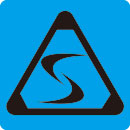

| Full face PCD insert |
| PCD tipped insert |
| C (80° diamond) |
| D (55° diamond) |
| T (60° triangle) |
| V (35° diamond) |
| W (80° hexagon) |
| solid CBN insert |
| thoroughly brazed |
| PCBN tipped insert |
| C (80° diamond) |
| D (55° diamond) |
| T (60° triangle) |
| V (35° diamond) |
| S (90° square) |
| W (80° hexagon) |
Home >> Technical FAQs >> Machining cast iron with pcbn inserts |
Machining cast iron with pcbn inserts |
The manufacturers of cutting tools keep developing newer tools for milling and turning operations needed for materials made from cast iron. That is an achievement by itself, as each item, its manufacturer and the application is unique. Some vital tips to be kept in mind at all times are here: |
| You should have the utmost control over the properties of your workpiece, as variations can adversely affect the entire productivity. In case you are unsure of the properties of the workpiece, you should consider your cutting strategies and tooling arrangement to compensate for any deficiency in the quality of the material. It is imperative to know the strategies and tools that are most suitable for the application. |
As far as cast iron is concerned, it all depends on the particular application you may have in mind. You should necessarily calculate how many operations would be required for achieving your goal. In case you are not aware of the characteristics of the workpiece, you need to keep provision for an additional cut for the finished product, though it will affect the production time. |
Milling operations on a piece of cast iron are much more complex than the turning operation. Of course, it is critical to use inserts of correct grade, but it is more vital to consider the cutting solution in its totality. Apart from considering the grade and geometry of the pcbn inserts, you have to consider the body type of the cutter, along with the number of cutting edges in respect to the component. Moreover, coolant and heat are not the best for the milling of cast iron. |
As far as selection of the best cutter for cast iron is concerned, there isn't one that fits all. But, the kind of milling cutter which appears to be increasingly accepted these days could be a negative cutter having an insert with positive rake angle, with a grade that can handle dry as well as wet conditions. |
Though one kind of cutter could effectively cut different kinds of cast irons, it doesn't imply that it could efficiently machine workpieces of varying shapes. You have to consider the surface needing the cutting operation and question yourself: Is this a triangle or square-shaped piece? How thick are the thicknesses? Are these stable or weak? And, is the clamping of the workpiece secure? |
You must judge the machine tool. As the machining of cast iron items creates a larger dynamic load, the machine tool ought to be extremely tough, offering high stability and power, which further strains the machine tool. Under such circumstances, a negative cutter having a positive rake angle helps reducing the power required by the machine tool, and also lessens the pressure on the spindles of the machine. |
| HOME | About us | PCBN insert | PCD insert | Site map | Contact us | Technical FAQ |
We export PCBN insert to world wide countries, such as USA united states, Germany, UK united kingdom, Italy, France, Turkey, Russia, Saudi Arabia, United Arab Emirates, Ukraine, Israel, Canada, South Africa, South Korea, Japan, Australia, New Zealand, Finland, Sweden, Norway, Danmark, Switzerland, Poland, Czech,Ireland, Holand, Belgium, Greece, Croatia, Spain, Portugal, Egypt, India, Philippines, Cambodia, Thailand, Malaysia, Singapore, Indonesia, Mexico, Brazil, Colombia, Chile, Argentina etc. |
| Contact: Richard | Tel: +0086-13929967797 | E-mail: sales@pcd-insert.com |